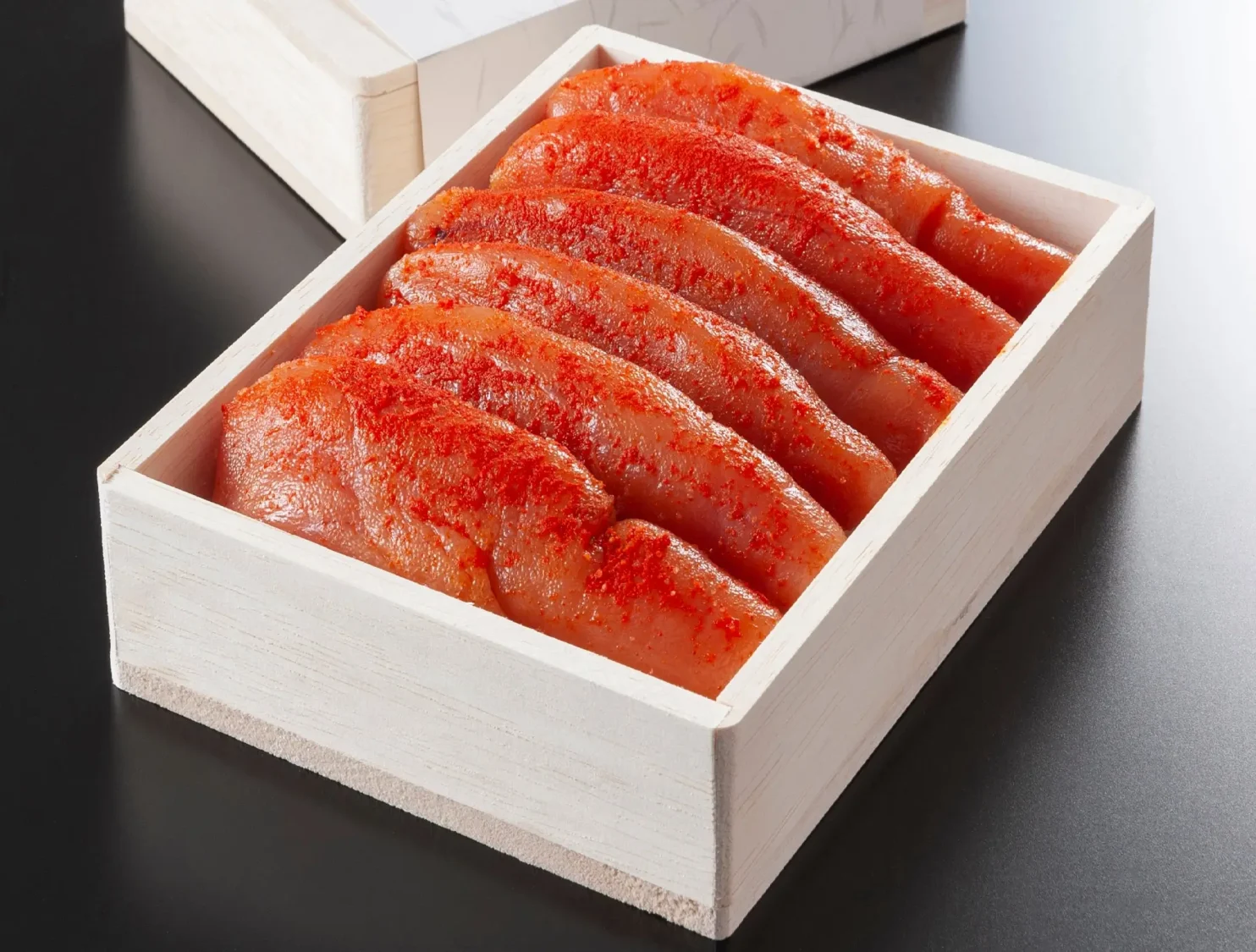
Mentaiko
Spicy marinated pollock roe, often served with rice or pasta.
Ingredients
- •Pollock roe
- •Red pepper
- •Sake
- •Konbu
- •Salt
Instructions
Clean Roe
Remove membrane and clean roe sacs
Marinate
Season with spicy marinade
Rest
Let flavors develop in refrigerator
Mentaiko is a vibrant, spicy seafood delicacy consisting of pollock roe (fish eggs) that have been marinated in a flavorful blend of chili peppers and other seasonings.
This beloved ingredient was actually inspired by Korean cuisine in the early 1900s, when a Japanese businessman discovered myeongran jeot (Korean spicy pollack roe) and brought the concept back to Fukuoka, Japan. The Japanese version was adapted to local tastes, typically featuring a milder spice level and different seasoning blend.
The preparation process involves carefully removing the delicate roe sacs from pollock fish, cleaning them, and then marinating them in a special mixture that typically includes red pepper powder, sake, konbu (kelp), and other secret ingredients that vary by producer. The marination process allows the roe to develop its signature spicy-umami flavor while maintaining its distinctive texture.
While mentaiko can be eaten on its own as a side dish, it has become incredibly versatile in modern Japanese cuisine. It's commonly served over hot rice, mixed into pasta (mentaiko pasta being a popular fusion dish), spread on onigiri (rice balls), or used as a filling in various other dishes. Some creative applications include mentaiko mayo for sandwiches or as a topping for vegetables.
In Japan, mentaiko is particularly popular in Fukuoka, where it's often enjoyed as a breakfast item alongside rice and miso soup. It's also a common otsumami (snack to accompany alcohol) in izakayas across the country.
From a nutritional standpoint, mentaiko is high in protein and omega-3 fatty acids, making it a healthy choice for those seeking brain-boosting nutrients. However, it's worth noting that it's quite high in sodium due to the curing process, so those watching their salt intake should consume it in moderation. Additionally, as a seafood product, it should be avoided by those with shellfish or fish allergies. Pregnant women should consult their healthcare provider about consuming this product as it contains raw fish roe.
